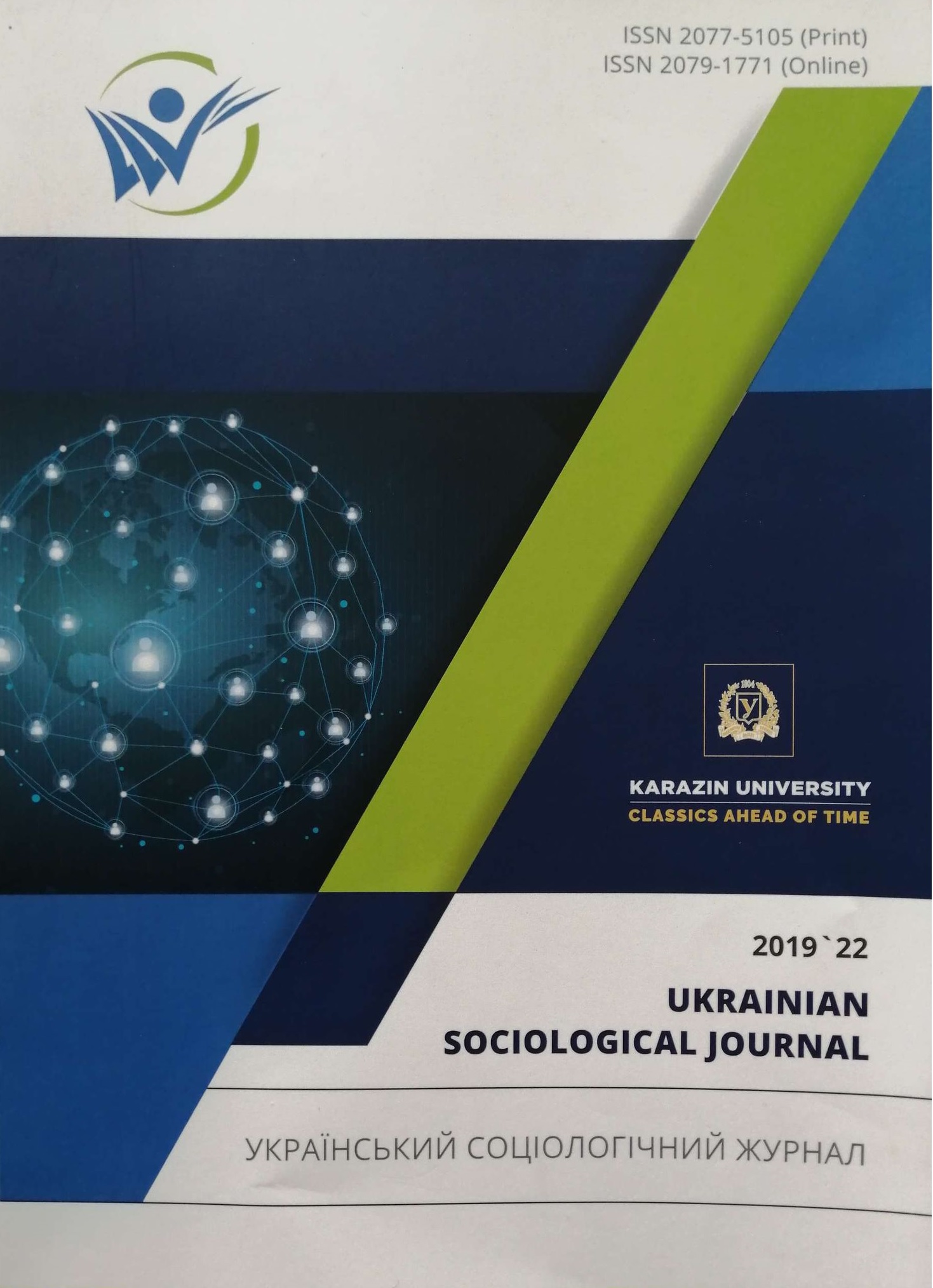Соціальний капітал спільнот українських мігрантів: теоретизації та досвід емпіричного дослідження
Анотація
У статті наголошується на малодослідженому аспекті явища зовнішньої міграції – функціонуванні спільнот мігрантів у приймаючих країнах. Обгрунтовується доцільність використання теорії соціального капіталу та теорії міграційних мереж як теоретико-методологічної основи відповідного дослідження. Розглядаються напрацювання Р. Парка, Дж. Коулмана, А. Портеса та конструюються основні операціональні параметри соціального капіталу спільнот мігрантів. Аналізуються параметри функціонування та трансформації соціального капіталу у двовимірному просторі автономності і ефективності. Запропонована авторська класифікація спільнот мігрантів за типом соціального капіталу. Виділені такі типи спільнот як: 1) низькоефективна високоавтономна спільнота; 2) високоефективна високо автономна; 3) високоефективна та низькоавтономна спільнота. Наводяться результати авторського експертного опитування представників спільнот українських мігрантів у країнах Євросоюзу, присвяченого трансформації соціального капіталу цих спільнот. Соціальний капітал мігрантських спільнот українців є «культурно об’єднуючим» (від англ. – bonding social capital), тобто спрямованим на збереження спільної культурної ідентичності українців за кордоном в умовах іншокультурного середовища. Мігрантські спільноти українців залишаються відносно гомогенними у вимірі культури, ідентичності та практик. Виявлено, що у контексті сучасних трансформацій явища зовнішньої міграції відбуваються зміни і соціального капіталу спільнот мігрантів. Циркулярний характер міграції на сучасному етапі несприятливо впливає на соціальний капітал спільнот мігрантів, їхній постійний склад зменшується, соціальні зв’язки послаблюються, знижується автономність спільнот і посилюється інтеграція мігрантів у приймаючі суспільства. Значна частка спільнот станом на сьогодні є до певної міри деінституціоналізованою.
Завантаження
Посилання
Парк Р. Э. Организация сообщества и романтический характер. Социологическое обозрение. 2002. Т. 2. N 3. С. 13-18.
Coleman J. Social Capital in the Creation of Human Capital. The American Journal of Sociology, 1988. Vol. 94. Pp. 95-120.
Gans H. Second Generation Decline: Scenarios for the Economic and Ethnic Futures of the Post – 1965. American Immigrants, Ethnic and Racial Studies, 1992. Vol. 15(2). Pp. 173-192.
Granovetter M. S. The Strength of Weak Ties. The American Journal of Sociology, 1973. Vol. 78, No. 6, pp. 1360-1380.
Lancee B. Immigrant Performance in the Labour Market: Bonding and Bridging Social Capital. Series: IMISCOE Research. Amsterdam University Press, 2012. 192 p.
Loury G. A dynamic theory of racial income differences. Women, minorities, and employment discrimination. Edited by P. A. Wallace, A. M. La Mond. Lexington: Heath, 1977. Pp. 153-86.
Massey D.S., Reichert J. History and Trends in U.S. Bound Migration from a Mexican Town. International Migration Review, 1980. Vol. 14 (4). Pp. 475-491.
Park R. (1928) Human Migration and the Marginal Man. American Journal of Sociology. Vol. 33. Pp. 881-893.
Portes A., Sensenbrenner J. Embeddedness and immigration: Notes on the social determinants of economic action. American Journal of Sociology, 1993. Vol. 98. Pp. 1320-1350.
Portes A., Landolt P. Unsolved Mysteries: The Tocqueville Files II: The Downside of Social Capital. The American Prospect, 1996. Vol. 26. Pp. 18-21.




